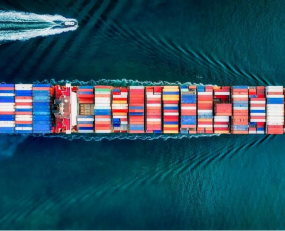
The shipping sector is still adjusting to the phasing-out of sulphur in bunker-fuel, yet now it is confronted with demands for ‘speed limits’ for ships in order to limit carbon dioxide output.
Much of the manoeuvring around this issue is being carried out behind closed doors at the International Maritime Organisation in London. The organisation, which represents most of the major interests in the shipping sector, adopted a policy in 2018 to support measures that cut “carbon emissions” by 40% by 2030 and 50% by 2050. Extensive leaking by various parties suggests that the French government has now taken the initiative by proposing some form of mandatory agreement to limit ship’s speeds by type of vessels. This has been supported by the publication of an open letter by a number of ship owners stating that they would prefer “to set maximum annual average speeds for container ships, and maximum absolute speeds for the remaining ship types, which take account of minimum speed requirements”. This group of ship-owners are largely in the bulk trades, with many of them being Greek.
The major container shipping lines, however, have indicated their annoyance at these ideas with both Maersk and Hapag Lloyd publicly disagreeing with the proposals. They assert their advanced vessels are already highly efficient and promise further fuel efficiency.
The adoption by container ships of ‘slow steaming’ of around 15 knots or less has already had a major impact. Data published by Clarkson’s and the UK Chamber of Shipping suggest that the speed of container ships has fallen by 25% since 2008. This combined with the increased size of vessels probably has led to a very substantial fall in consumption per container. Of course, the number of containers moved has increased, thus sustaining the gross consumption of fuel.
The implications for customers of container shipping lines are likely to be both hard to calculate and important. Shippers already find it difficult to estimate the arrival times of container vessels, slowing ships further is likely to add to the confusion. As the UK chamber of commerce points out, the logical response would be to switch to other modes of freight transport such as air freight, or what is increasingly and option between Europe and China, rail and road. Indeed, the changing nature of supply chain management may be pushing in the direction of faster shipping services. Managing this problem for the container shipping sector may be difficult.
Source: Transport Intelligence, May 7, 2019
Author: Thomas Cullen